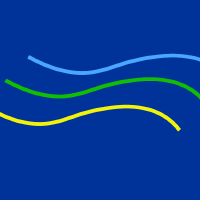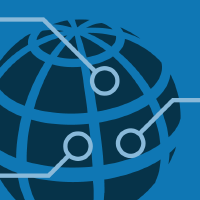Topic Editors

2. Geoscience and Digital Earth Centre (INSTeG), Research Institute for Sustainable Environment, Universiti Teknologi Malaysia, Johor Bahru 81310, Malaysia



Future Trends in Mapping Potential Zones of Critical Minerals Using Advanced Imagery Techniques
Topic Information
Dear Colleagues,
Demand for critical minerals is growing rapidly (tripling by 2030 and quadrupling by 2040) as they are essential components for clean energy technologies. Rare earth elements (e.g., Nd, Pr, Dy and Tb), which are used in the magnets of electric motors and wind turbine generators, are critical. Cobalt (Co), lithium (Li) and graphite are considered critical due to their wider use in various battery chemistries and the rapid growth of the electric vehicle industry. Platinum group metals, e.g., Pr and Ir, which are used in hydrogen electrolyzers, are critical as hydrogen technologies increasingly aim to achieve net zero carbon emissions. Gallium (Ga) remains important due to its use in light-emitting diodes (LEDs), in the manufacture of magnets and in semiconductors. Aluminum (Al), copper (Cu), nickel (Ni) and silicon (Si) will increase from non-critical to almost critical in the medium term due to their importance for electrification. Electrical steel is almost critical due to its use in transformers for the power grid and in electric motors in electric vehicles. Therefore, innovative and cost-effective techniques are needed to map and locate potential areas with new primary resources of critical minerals in the coming future. Earth observation using advanced remote sensing imagery is the only technique with large spatial coverage to explore new future deposits of critical minerals on a regional to global scale. The fusion, analysis and selection of multidisciplinary geoscientific information layers from remote sensing, geophysical, geochemical and geological datasets using machine learning algorithms and geostatistical techniques is an important phase towards the accurate exploration of critical minerals and the generation of probability maps. The main objective of this topic is to focus on advanced imaging techniques, e.g., drone- and air-borne sensors, as well as ideas for merging data from different sources to locate and explore new future deposits of critical minerals on a regional to global scale. The focus is on the increasing integration of advanced multi-sensor technologies and methods in conjunction with more intensive mineral exploration techniques and mineral prospectivity mapping (MPM). Multidisciplinary, innovative mineral exploration studies that draw on a variety of datasets, algorithms, field and laboratory techniques and cover different research aspects of critical mineral exploration are highly valued and welcome.
Dr. Amin Beiranvand Pour
Prof. Dr. Mazlan Hashim
Dr. Shojaeddin Niroomand
Prof. Dr. Basem Zoheir
Dr. Jong Kuk Hong
Prof. Dr. Hojjatollah Ranjbar
Topic Editors
Keywords
- critical minerals
- remote sensing
- earth observations
- REE
- PGE
- mineral prospectivity mapping (MPM)
- multispectral and hyperspectral remote sensing data
- geochemical exploration
- geo-statistical algorithms
- deep learning techniques
- thermal proximal
- drone- and air-borne sensors
- probability maps
Participating Journals
| Journal Name | Impact Factor | CiteScore | Launched Year | First Decision (median) | APC | |
|---|---|---|---|---|---|---|

Geosciences
|
2.4 | 5.3 | 2011 | 26.2 Days | CHF 1800 | Submit |

Minerals
|
2.2 | 4.1 | 2011 | 18 Days | CHF 2400 | Submit |

Geomatics
|
- | - | 2021 | 21.8 Days | CHF 1000 | Submit |

MDPI Topics is cooperating with Preprints.org and has built a direct connection between MDPI journals and Preprints.org. Authors are encouraged to enjoy the benefits by posting a preprint at Preprints.org prior to publication:
- Immediately share your ideas ahead of publication and establish your research priority;
- Protect your idea from being stolen with this time-stamped preprint article;
- Enhance the exposure and impact of your research;
- Receive feedback from your peers in advance;
- Have it indexed in Web of Science (Preprint Citation Index), Google Scholar, Crossref, SHARE, PrePubMed, Scilit and Europe PMC.



